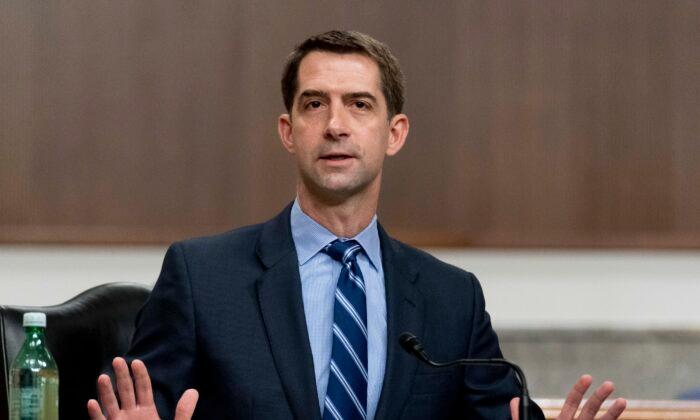The House Select Committee on the China Communist Party (CCP) has asked the U.S. Navy to provide a detailed long-term plan for fuel redistribution for American forces after the recent closure of the strategic Red Hill fuel storage facility in Hawaii.
“In the face of the Chinese Communist Party’s historic military buildup, creating a viable, long-term plan to redistribute Red Hill’s fuel is a strategic imperative,” the letter warned.
In March 2022, Secretary of Defense Lloyd Austin announced the permanent shutdown of the Red Hill facility due to fuel leaks that pollute the Navy’s drinking water on Oahu Island. The facility was built during World War 2 and was the Pentagon’s largest underground fuel storage facility that can store up to 250 million gallons of fuel. It had played a crucial logistic role for U.S. forces operating across the Pacific for decades.
“Since then, the Department of Defense (DoD) and the Navy have repeatedly downplayed the impact the closure would have on our operational posture in the Indo-Pacific,” Mr. Gallagher said.
The letter cited Mr. Austin’s commitment, made at the time of the Red Hill facility closure, to relocate the stored fuel to both sea and ashore and to “expand and accelerate that strategic distribution.”
“Yet it is unclear how exactly the Navy will replace and distribute the aggregate bulk fuel capacity of Red Hill,” Mr. Gallagher noted.
The lawmaker pointed out the shortcomings of these options. “Smaller storage capacity at new locations will likely require more frequent trips by our fleet of fuel tankers between the continental United States and locations dispersed throughout the Pacific, thereby adding to operational risk and uncertainty,” the letter wrote. “Using tankers as afloat storage points for prolonged periods of time may create the potential for the degradation of militarily useful fuels (through oxidation).”
U.S. military experts have warned about gaps in U.S. defense logistics as the Chinese regime, which now has more naval vessels than the United States, has dramatically expanded its military and has not ruled out using force to bring Taiwan under its control. Beijing considers the democratically governed island part of its own territory.
U.S. officials have turned to commercial tankers under the Tanker Security Program to give the Pentagon access to U.S.-registered vessels to deliver fuel to the military in the event of a crisis.
However, Mr. Gallagher noted that the program would not be enough as the Navy’s current fleet falls short of tankers needed to transport fuel to U.S. forces. “The Navy appears to be short—by several dozen—ships that will be needed to transport and deliver fuel to our bases and forces operating across the Indo-Pacific,” Mr. Gallagher said, citing a 2016 Defense Department determination that it would need 86 tankers for moving equipment and supplies for global operations.
Mr. Gallagher requested Mr. Del Toro provide information on whether the Navy had enough forward fuel storage facilities and access to refinery capacity for operations in the Indo-Pacific, whether it had identified secure locations to build replacement facilities for Red Hill, and whether it had plans to integrate facilities of allies and partners in redistributing fuel.
“We must address potential weaknesses in our logistical supply lines while we still have the time to do so,” he said.
The Epoch Times has reached out to the Pentagon for comment.






